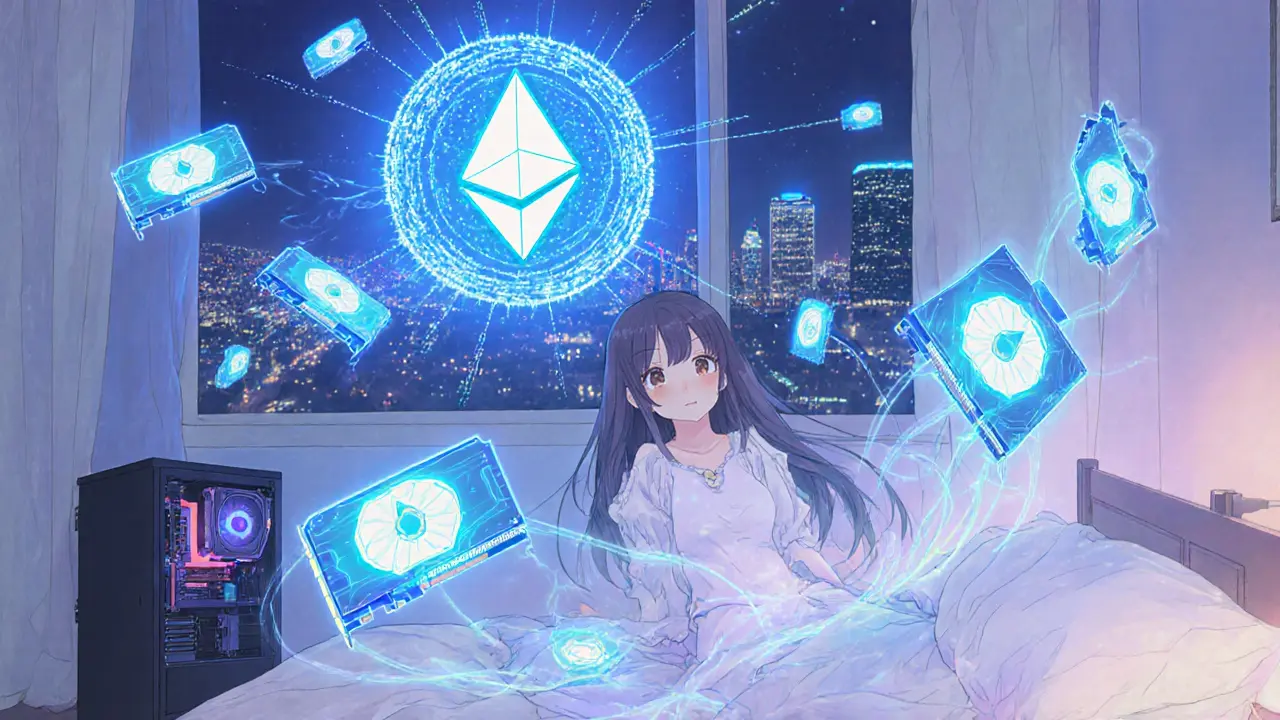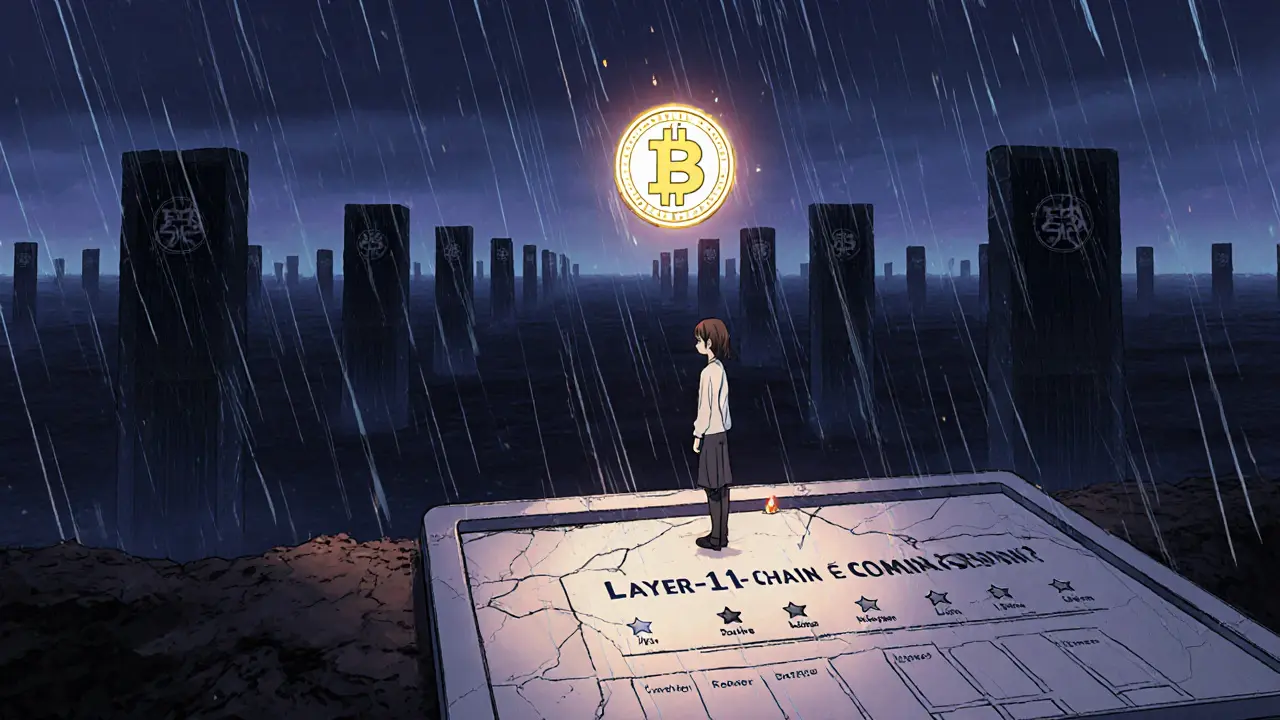What is OpenGPU (OGPU) Crypto Coin? A Realistic Look at the Decentralized AI Computing Project

GPU Rental Earnings Calculator
How It Works
Calculate potential earnings from renting your idle GPU on OpenGPU. Based on current network conditions (October 2024).
Important Notes:
- Current market cap: $2.8M (October 2024)
- Network has very limited provider demand
- Actual earnings may be significantly lower
- High competition from established networks (RNDR, Akash)
OpenGPU (OGPU) isn’t another meme coin chasing hype. It’s a cryptocurrency built around a real problem: AI needs way more computing power than the world can currently supply. And the companies running data centers - Amazon, Google, Microsoft - are stretched thin. OpenGPU’s answer? Let regular people and small businesses rent out their idle GPUs to train AI models, and get paid in OGPU tokens for doing it.
What Exactly Is OpenGPU?
OpenGPU is a decentralized network designed to turn unused graphics cards into a global computing marketplace. Think of it like Uber, but instead of cars, you’re sharing GPU power. If you’ve got a gaming rig with an NVIDIA RTX 4080 sitting idle while you’re at work, OpenGPU lets you lend that power to someone training a large language model - and get paid in OGPU tokens for it.
The native token, OGPU, runs on the Ethereum blockchain. It’s not just a currency - it’s the fuel for the whole system. Users who need AI processing power pay in OGPU. Providers who offer GPU time earn OGPU. Even the blockchain’s transaction fees are paid in OGPU. That tight integration is what makes it different from other crypto projects.
How Does It Actually Work?
The network runs on three simple roles:
- Clients - AI developers, researchers, or startups who need to train models or run real-time AI tasks like image generation.
- Providers - People or small data centers with spare GPU power who run the OpenGPU software and earn tokens for their compute time.
- The oGPU Chain - The blockchain layer that matches tasks to providers, verifies results, and handles payments automatically.
When a client submits a job - say, training a small AI to recognize cat breeds - the system finds a provider with matching GPU specs. The provider runs the task, submits the output, and the blockchain checks it against a verification protocol. If it’s correct, the provider gets paid. No middlemen. No paperwork. Just code doing the work.
It supports two types of workloads: batch tasks (like training a model over hours) and streaming tasks (like generating images in real time). That’s a key advantage over networks that only handle one or the other.
Why Ethereum? And Why Move Away From It?
OpenGPU started on Ethereum because it’s secure, well-tested, and has smart contract reliability. But Ethereum isn’t fast or cheap enough for constant AI workloads. Gas fees can spike, and transaction times get slow during busy periods.
That’s why OpenGPU plans to launch its own Layer-1 blockchain - a custom network built just for compute tasks. It’s meant to handle thousands of job requests per second with low fees and instant confirmations. The problem? No timeline has been given. No testnet has been released. And no code has been published showing how this new chain will actually work. That’s a red flag for anyone expecting near-term progress.

How Big Is OGPU? The Numbers Don’t Lie
As of October 2024:
- Total supply: 21 million OGPU
- Circulating supply: 19.63 million (93.5% already out)
- Market cap: $2.8 million
- Trading volume (24h): $638,152
- Price: ~$0.15
- Rank on CoinMarketCap: #1664
Compare that to Render Network (RNDR), which has a $1.2 billion market cap, or Akash Network at $225 million. OpenGPU is tiny. It’s not even in the top 1,000 cryptocurrencies by market value. That means very few people are using it - and even fewer are providing GPU power.
With only around 6,450 token holders, the network struggles to scale. One Reddit user reported trying to run a small AI training job - but couldn’t find enough providers to finish it. If no one’s offering GPU time, the whole system breaks.
Who’s Using It? And Who’s Not?
Right now, OpenGPU’s users are mostly hobbyists, small AI researchers, and crypto speculators. There are no public case studies of companies using it for real production work. No universities. No startups building AI products at scale. That’s not because the tech doesn’t work - it’s because the network is too small to trust.
Compare that to io.net or Akash, which already have enterprise clients running production AI workloads. OpenGPU hasn’t even reached the point of being a viable alternative. It’s still a proof-of-concept with no real traction.
The Competition Is Heavily Favored
OpenGPU isn’t the only player in decentralized GPU computing. It’s one of dozens. And most of them are far ahead:
- Render Network (RNDR) - $1.2B market cap, used by major studios for 3D rendering and AI.
- Akash Network - $225M market cap, offers GPU and CPU rentals with enterprise contracts.
- io.net - $180M market cap, already integrated with major AI platforms.
OpenGPU’s only real edge is its focus on AI workloads. But RNDR and Akash are adding AI support too. OpenGPU hasn’t proven it can do anything better - or faster - than those bigger networks.

What’s Missing? Transparency and Progress
OpenGPU’s website talks about “lightning-fast block processing” - but users on CoinCheckup report 2-3 minute confirmation times during peak hours. That’s not fast. That’s worse than Ethereum’s average.
Its GitHub has 47 contributors and 186 commits - fine for a small project, but nowhere near the activity levels of RNDR or Akash. The roadmap is vague: “We’re building a Layer-1 chain,” “We’ll launch DAO governance.” No dates. No milestones. No public beta.
There’s no documentation on how to become a provider beyond basic wallet setup. No tutorials on optimizing GPU performance. No clear pricing model. It feels like a project that’s still in the idea stage.
Is OGPU Worth Buying?
If you’re looking to invest, treat OGPU like a high-risk lottery ticket. It’s not a stable asset. It’s not a proven platform. It’s a bet on a team that hasn’t delivered anything yet.
If you’ve got a spare GPU and want to try earning crypto by sharing it - sure, test it out. But don’t expect to make serious money. The network is too small. The demand is too low. The competition is too strong.
And if you’re hoping OGPU will become the next big AI crypto project? The odds are slim. It needs to attract thousands of providers overnight, fix its speed issues, and launch its own blockchain - all while competing with giants who already have billions in market value and real customers.
Right now, OpenGPU is an interesting idea with zero real-world impact. It’s not a scam. But it’s not a solution either. It’s a spark - and right now, there’s no wind to turn it into a flame.
What’s Next for OpenGPU?
The project’s future hinges on three things:
- Launching its own Layer-1 blockchain - and making it actually faster and cheaper than Ethereum.
- Attracting hundreds of GPU providers - not just a few dozen.
- Proving it can handle real AI workloads better than the big players.
Without those, OGPU will stay a footnote in crypto history - a project that had potential but never took off.





Mike Calwell
November 15, 2025 AT 23:44OGPU? Sounds like a typo for OGG. Just stick with RNDR.
Bruce Murray
November 17, 2025 AT 06:43I’ve got an RTX 3070 sitting in my closet collecting dust. If this actually works without crashing my rig, I’m in. But I’ve seen too many ‘decentralized compute’ projects vanish after a tweet.
Aryan Juned
November 19, 2025 AT 04:13Brooo, OGPU is gonna be the next SOLANA for AI!! 🚀💥 Imagine your GPU mining memes while you sleep-then waking up to 1000x returns!!! I already bought 50k OGPU with my ramen budget!! 😭🔥
Student Teacher
November 19, 2025 AT 07:39Wait-so if I lend my GPU, how do I know the AI isn’t training something sketchy? Like deepfakes or malware? Is there any ethical oversight? Or is it just ‘code is law’ and we don’t ask questions?
Teresa Duffy
November 20, 2025 AT 03:30This is actually kind of brilliant. Imagine a world where your gaming rig pays for your next upgrade. I’ve seen small dev shops use io.net to train models-why not this? The tech is sound, it’s just… undercooked. Give it 18 months and a real marketing push, and this could be huge.
Carol Wyss
November 21, 2025 AT 10:41I really hope this works. I’m not here to get rich-I just want to make use of my idle hardware. But if the interface is clunky or payments are delayed, I’ll bail. No one wants to babysit a crypto project for pennies.
Carol Rice
November 23, 2025 AT 07:45STOP TALKING ABOUT ‘POTENTIAL’ AND START SHOWING CODE! 🤬 You’re not a startup-you’re a PowerPoint with a whitepaper. If your ‘Layer-1’ is still vaporware, then OGPU is just a glorified Discord server with a token. I’ve seen this movie before-and the ending is always the same: the devs disappear, the holders cry, and the subreddit becomes a graveyard. Wake up, people!
Nataly Soares da Mota
November 24, 2025 AT 00:36The architecture is elegant in theory-decentralized compute orchestration via verifiable execution on-chain. But the operational latency, lack of SLA guarantees, and absence of a verifiable benchmarking protocol make it non-viable for enterprise-grade inference. The economic model is also flawed: if providers can’t achieve >$0.50/hr net yield after electricity and depreciation, adoption plateaus at hobbyists. Without a formalized pricing curve tied to GPU utilization tiers and real-time demand elasticity, this is just a speculative ledger with GPU-shaped illusions.
Ninad Mulay
November 24, 2025 AT 22:29Back home in India, we’ve got tons of gamers with old RTX cards. If OGPU works here without needing a US bank account, it could blow up. But yeah, right now it’s like selling a bicycle to someone who needs a rocket. Still… I’m gonna try it. What’s the worst that could happen? I earn 5 bucks and learn something new?
Grace Craig
November 26, 2025 AT 03:46One must observe that the project’s foundational premise-decentralized GPU commoditization-is not novel. What distinguishes it, hypothetically, is its tokenomic integration. However, the absence of audited smart contracts, transparent node operator requirements, and verifiable performance metrics renders the entire proposition academically interesting but practically negligible. One cannot reasonably expect market adoption without institutional-grade transparency.
Sean Pollock
November 27, 2025 AT 02:16bro i tried to join but my nvidia driver crashed 3 times. now my pc smells like burnt toast 😭. also why is the website made in 2017? is this a crypto project or a museum exhibit? 🤡
Jay Davies
November 27, 2025 AT 14:56Market cap under $3M? 19.63M tokens circulating? That’s a 100% pre-mine with zero vesting schedule. Classic rug pull setup. If the team controls 90% of the supply and the liquidity is locked in a single Uniswap pool, you’re not investing-you’re gambling on a honeypot. Check the token transfers. I bet 80% are going to one wallet.
Ryan Hansen
November 28, 2025 AT 19:00Look, I get the appeal. I’ve got two RTX 4090s in my basement, and I’ve thought about renting them out for months. But here’s the thing: I’ve tried Render Network. The payout is stable, the interface works, and I’ve made $120 in three months just leaving it on. OGPU? I downloaded the client. It asked for my wallet, my GPU serial, and then crashed with a ‘CUDA driver not found’ error. I uninstalled it. No refunds. No support. No logs. No updates. The devs are ghosting their Discord. If this were a restaurant, the chef would’ve quit two years ago and the waiter is just pretending to take orders.
Derayne Stegall
November 29, 2025 AT 08:02OGPU = OVERTHROW GPU 💪🔥 Just imagine: your GPU working while you’re on vacation, making crypto while you’re binge-watching Netflix. This is the future, bro. I’m buying more. 100x or bust! 🚀💸
Barbara Kiss
November 29, 2025 AT 22:57There’s something poetic about this. We’re trying to build a decentralized future on the backs of idle hardware-machines designed for games and entertainment, now repurposed for the quiet labor of artificial intelligence. It’s not just about profit. It’s about dignity. About giving the overlooked a voice in the algorithmic economy. But poetry doesn’t pay bills. And until the system is reliable, transparent, and fair-it’s just another dream wrapped in a whitepaper. Maybe that’s okay. Maybe the dream is the point.